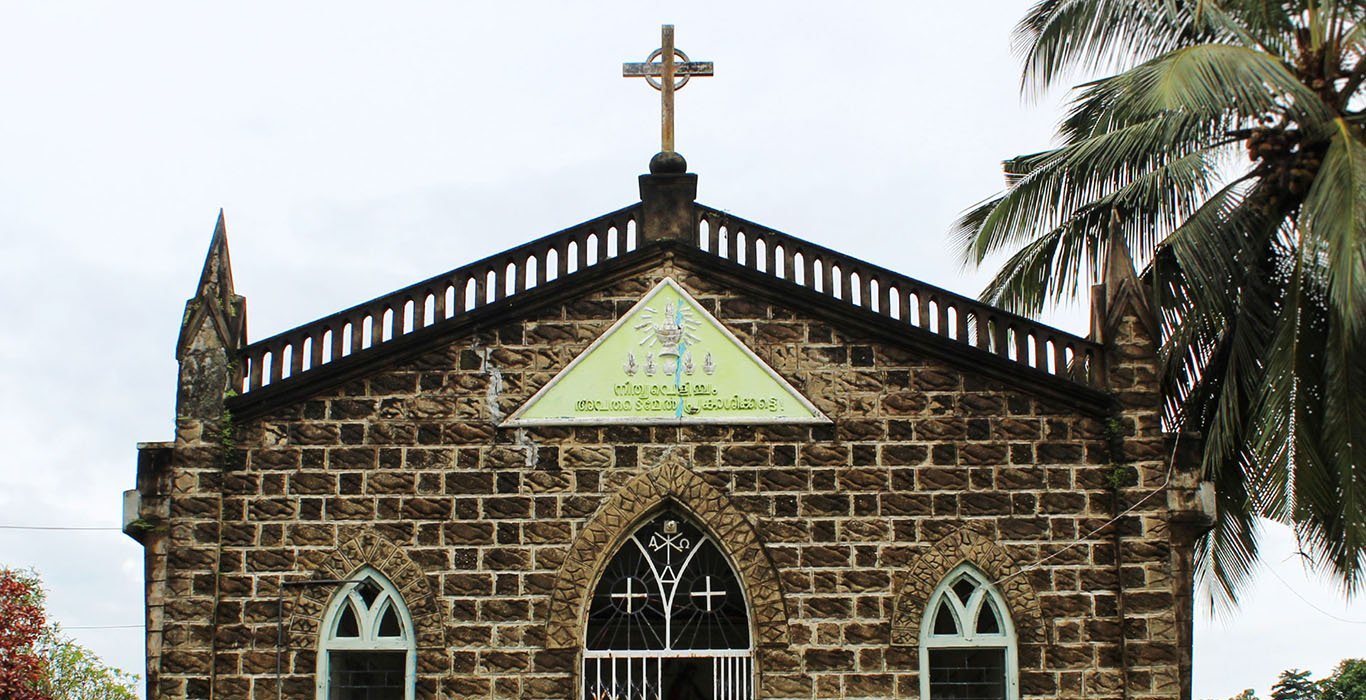An Immaculate work of Art The Vimalagiri Church
“An art not for an age, but for all time”
Text : Raisun Mathew || Pictures: Gokul Ramachandran
Every man in the world is blessed with his kind of worries that vary according to his surrounding factors. The destiny of one’s life may alter with a change in their perspectives to find solutions for the problems. A moment of silence can make one rethink of their lost track in life. The silence which is wandered for years by many reaches in coincidence with their unexplored spiritual aura of life as a tranquillizer. One such tranquillizer located 1.3 Kms away from Kottayam Railway station finds your required destiny, astounding both with its Neo-Gothic architectural style and spiritual resonance.
The Immaculate Heart of Mary Cathedral, also known as the Vimalagiri Cathedral or ‘Angathattu Palli’ becomes the unexplored beauty of silence that glides peace into one’s own heart. Close to the banks of Meenachil River that carries the cultural as well the historical heritage of the city, the church harmonizes the freshness of the greenery panorama with that of the sleepy slack movement of the water which would have been the inspiring reason for Late Rt. Rev. Dr Ambrose Abasolo from Spain into founding the first stone of the church back in 1956. It took eight years to fulfil the dream of the missionary as well as the local community believers. No one of those times could have known about the intentions behind building a nonconventional form of Neo-Gothic style. Though many such architectural manners have been experimented in different parts of the world, this is still rare in Kerala.
The structure of the Cathedral is 183 ft in length and 61 ft in width. The structure has a 172 ft tall tower with a 12 ft high cross which makes it the tallest church towers in Kerala from which the far long sight of Alappuzha beach is visible. This Neo-Gothic model where the pointed structures surrounding the church walls on the top make one recollect the ultimate destiny of his journey for which has to be furnished without fail. It is symbolic of a man rising up his hands to God in prayer. At the rear of the Cathedral is the bell fry containing two huge bells inviting people for prayer and worship.
This style emerged in the late 1740s in England, featuring an intention to revive medieval Gothic architecture, in contrast to the neoclassical styles prevalent at the time. The Cathedral is built of regularly shaped granite stone featuring tall towers, finials, flying buttresses, a copious number of stained glass windows, pendant patterns and scalloping. The lancet casements, cowl mouldings, label stops, vast numbers of statues and ribbed vaulted roof makes it non-identical to the archetypal form of church construction.
Each of the materials used for the construction and beautification of the Church was selected with utmost care to express the importance of spiritual ideas. Most of the sculptures, stones, marble works and paintings were imported from Spain. The facade exhibits a rib-shaped sandstone work around the borders of the entrance door denoting the unity towards the position of the heart. It leads to a much-heightened nave that points out that no one is perfect and are equally negligible compared to God. The pillars on either side through the nave draw a row holding a tunnel-shaped rib-vaulted roof reminds the believers that they lead a life which is both perplexed and bewildered. The beautiful ray of sunlight that comes in through those imported stainless glass paint works provides an extra elegance to the ambience of the church. They are of eight around the altar and the rest around the nave. Each painting finds represents each selected events in the Holy Bible. Entering the altar, one could see that the main area is entirely carved out of an imported alabaster marble which is a piece of glittering translucent glass glowing under fluorescent lamps. The Sanctuary of the Cathedral that is laid with marble slabs is artistically carved wherein the statue of the Blessed Virgin Mary is fixed. This statue of Mother Mary is considered to be the tallest among all the churches in Kerala. The statue of the body of Jesus on the lap of his sorrowing Mother Mary that got inspired from Michael Angelo’s “Pietà” is referred to various miraculous incidents by the believers, thus making it an unavoidable haven for them.
Even today, the community of believers in connection with the church wonder about the architectural intelligence behind the Cathedral. Though the advisor was Late Rt. Rev. Dr Ambrose Abasolo, the works progressed under the guidance of two masons namely Ambross Mesthri and Soosae Anthony. Most of the workers were from Kanyakumari district of Tamil Nadu. The area chosen was a hilltop popularly known as ‘Angathattu’ for its historicity of being the battlefield during the regime of princely states. If one would walk half a century back, the scenery of such a hilltop in which the Cathedral remains will be seen as the only building of such a magnificent presence. It faces the East direction remembering the architectural believes of a period and living. Temporarily fixed bamboo sticks and ropes were used during the construction process of the church. Surki mixture was used to fix the stones. It could have been a celebration for the whole locality in participating in an extraordinary creation. Tourists and research scholars visit the Cathedral in search of their spiritual peace as well as for learning more about ancient architectural mastery. One would not be dissatisfied for being isolated in the area with only one destination spot. In and around 8 Km distance, there lies several hot spots famous for their unique features. So, one shall enjoy different cultures of the town as well as the village landscape, where it stands for our traditional quote of unity in diversity. It ensures you the pleasure of visiting something special that is being explored by history to leave behind the sparks of ultimate mystery in you.



